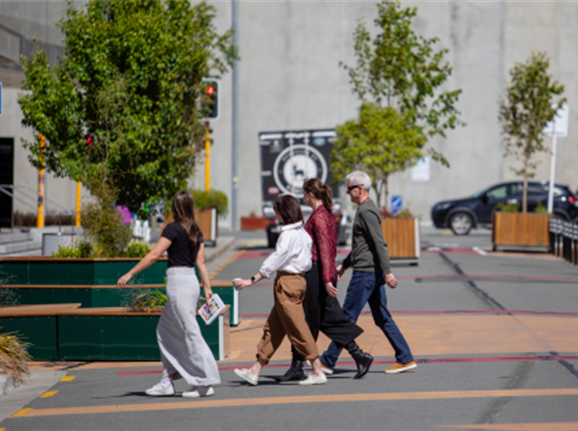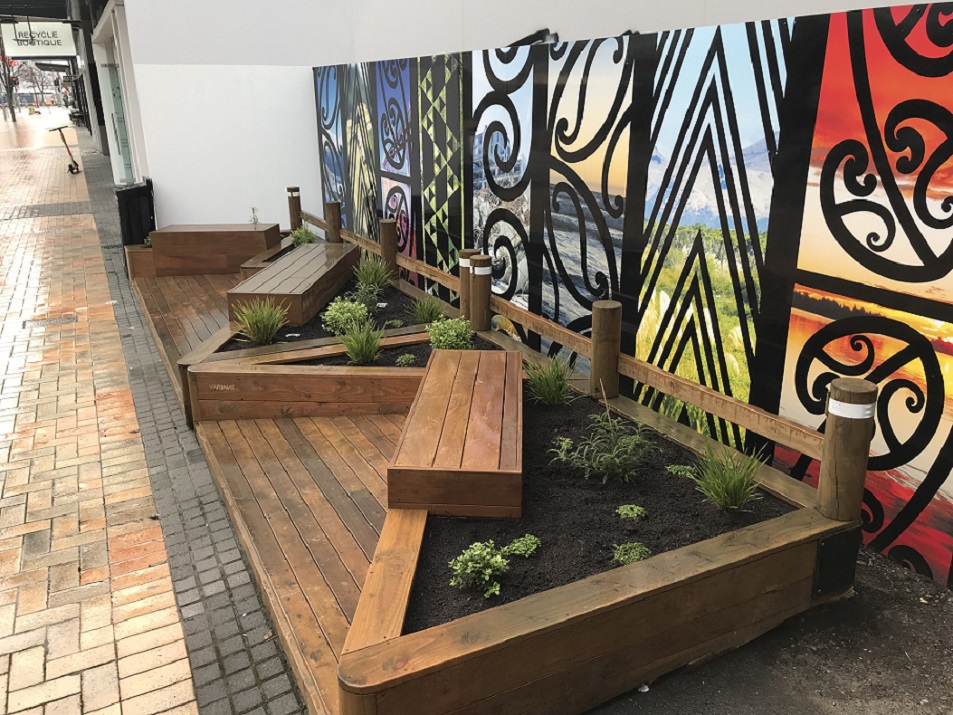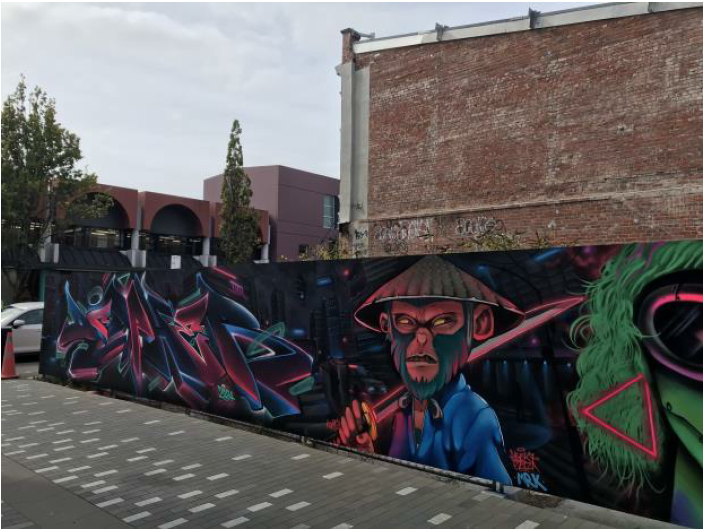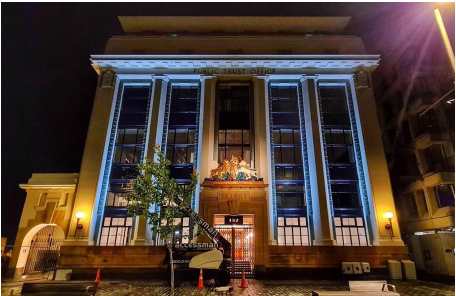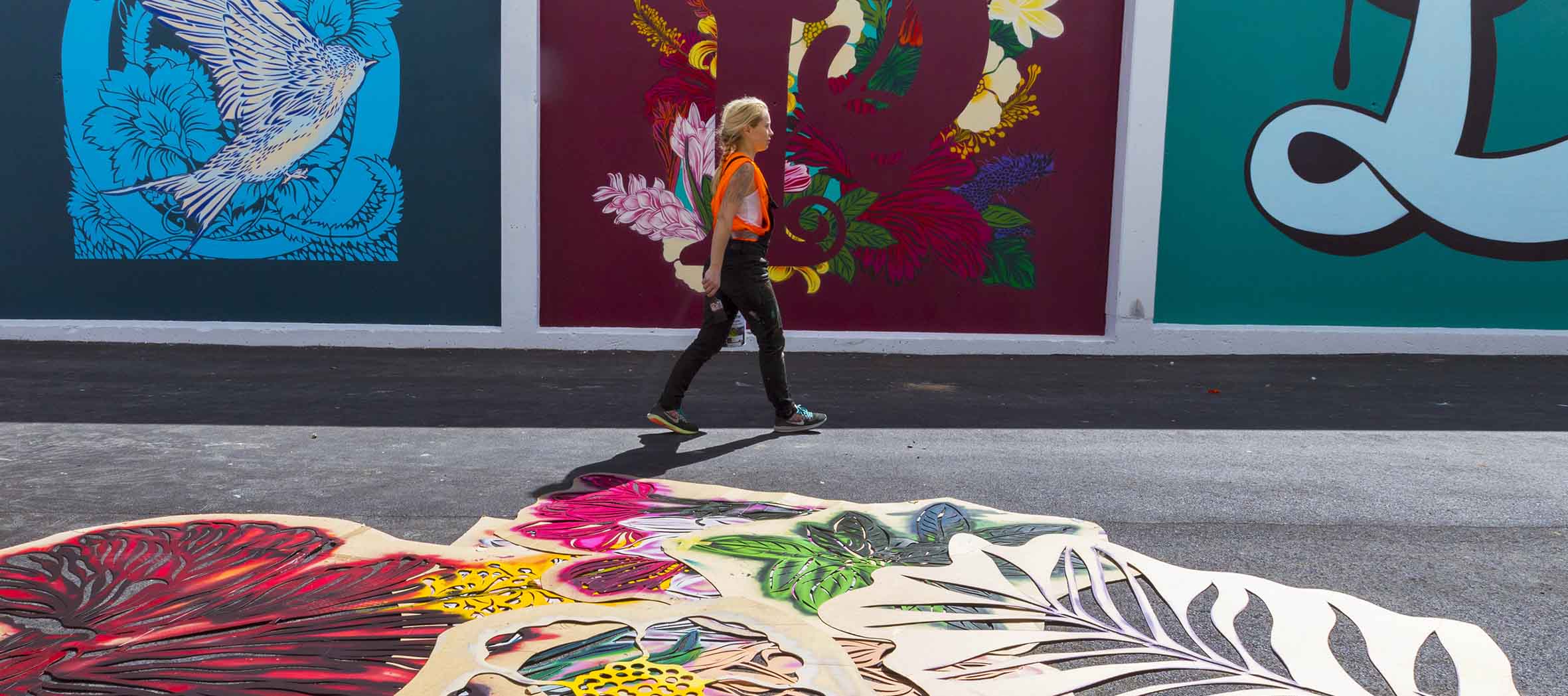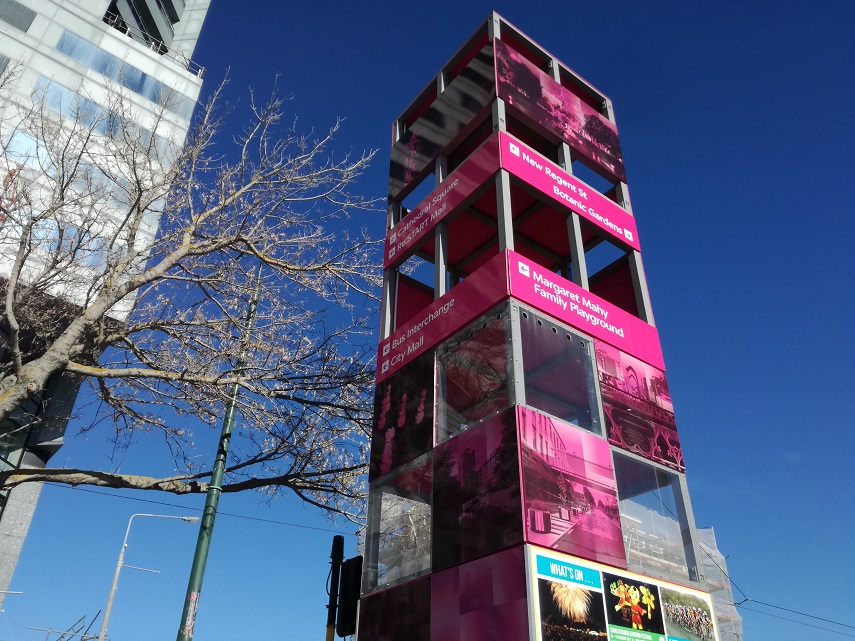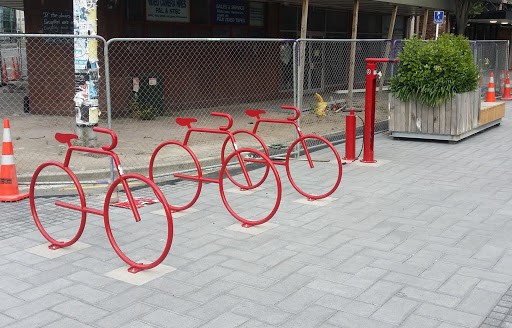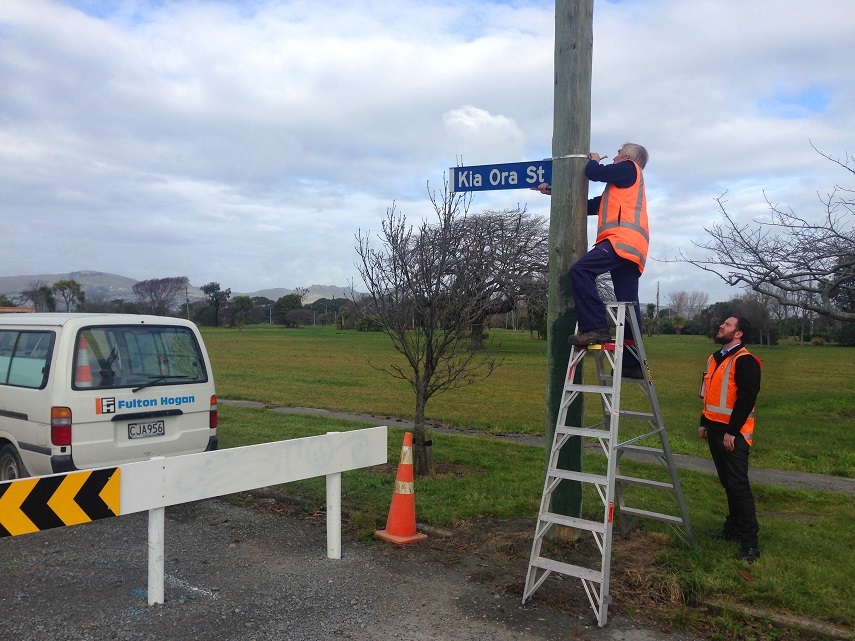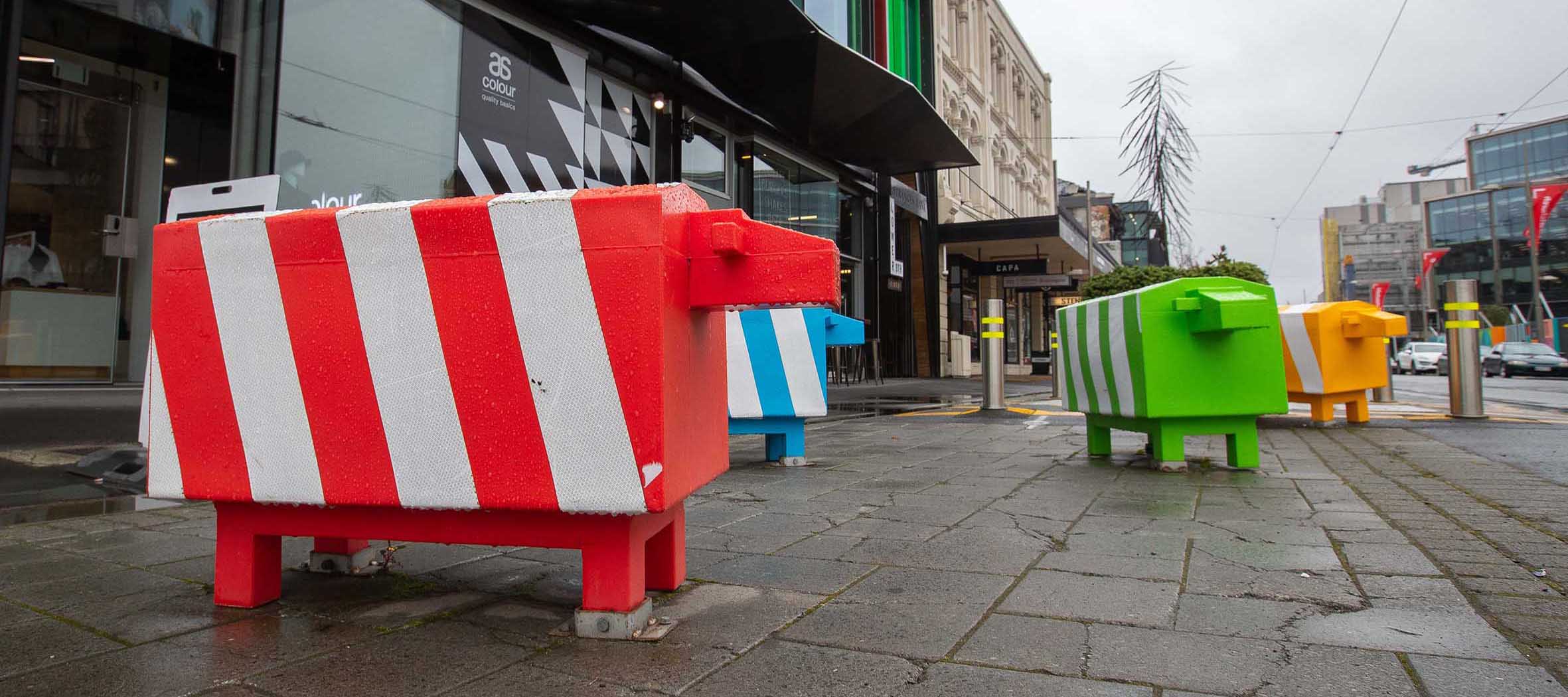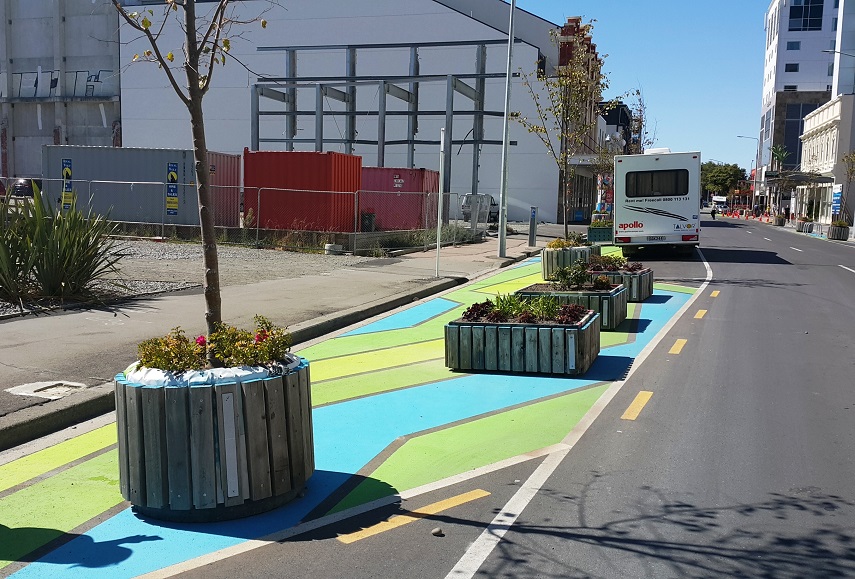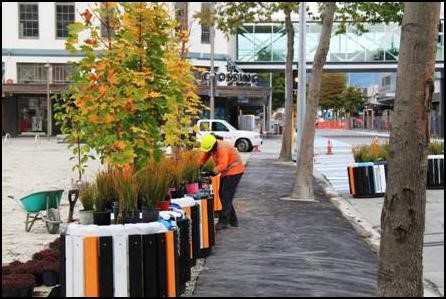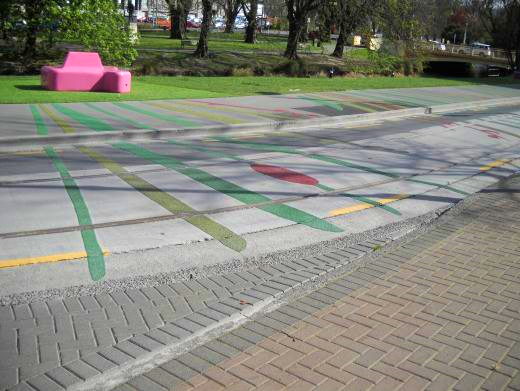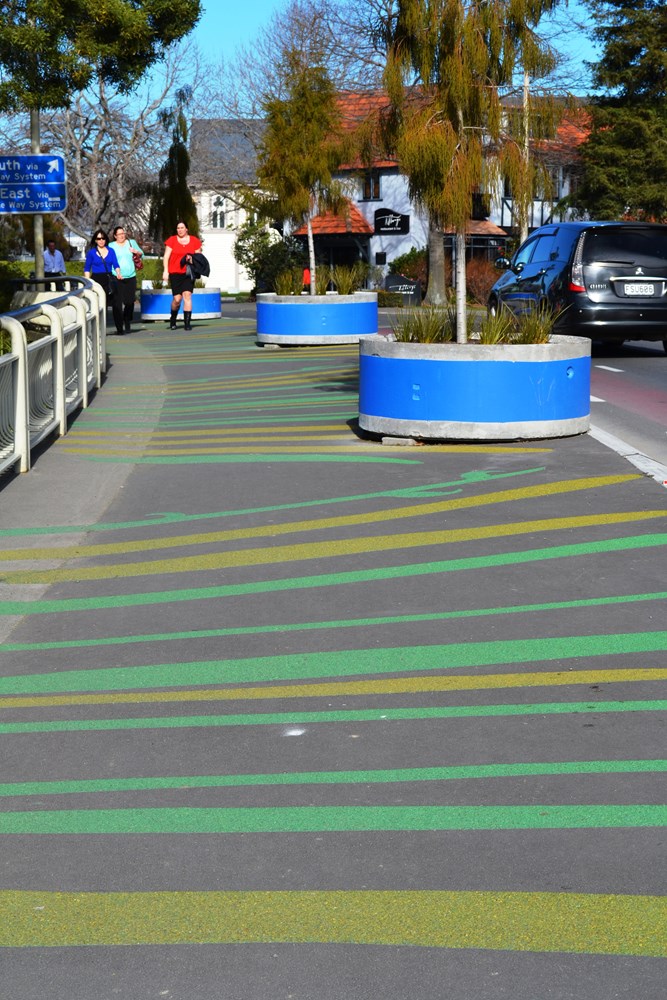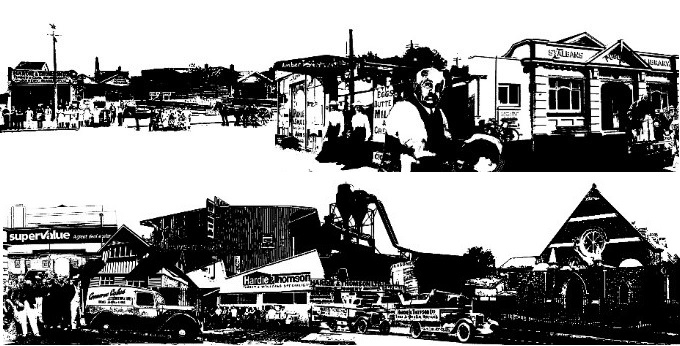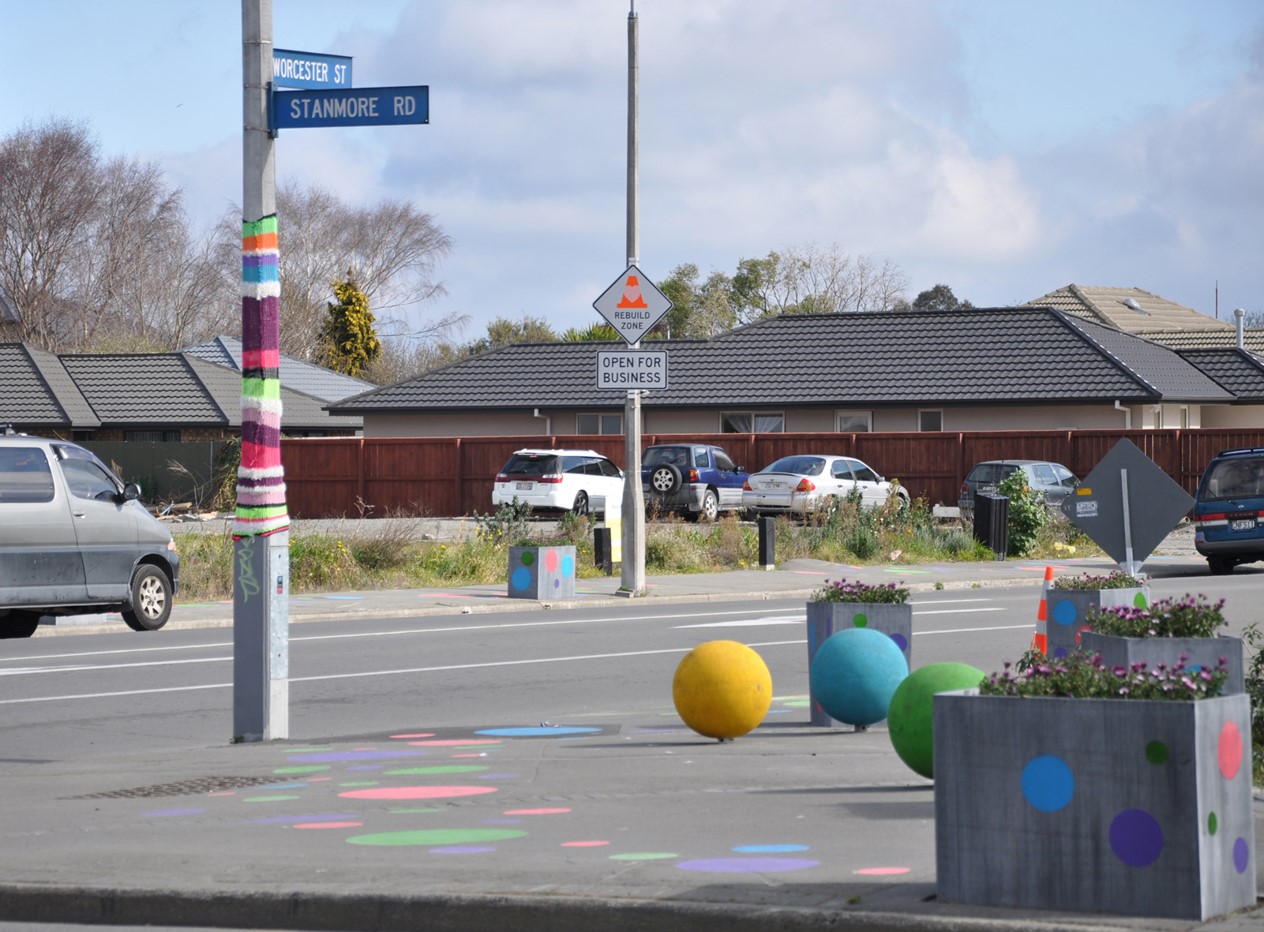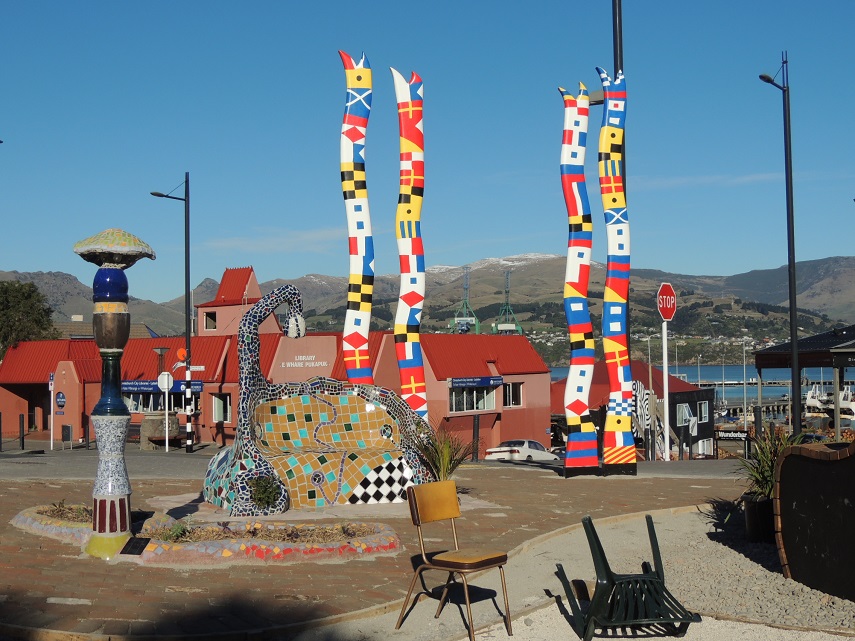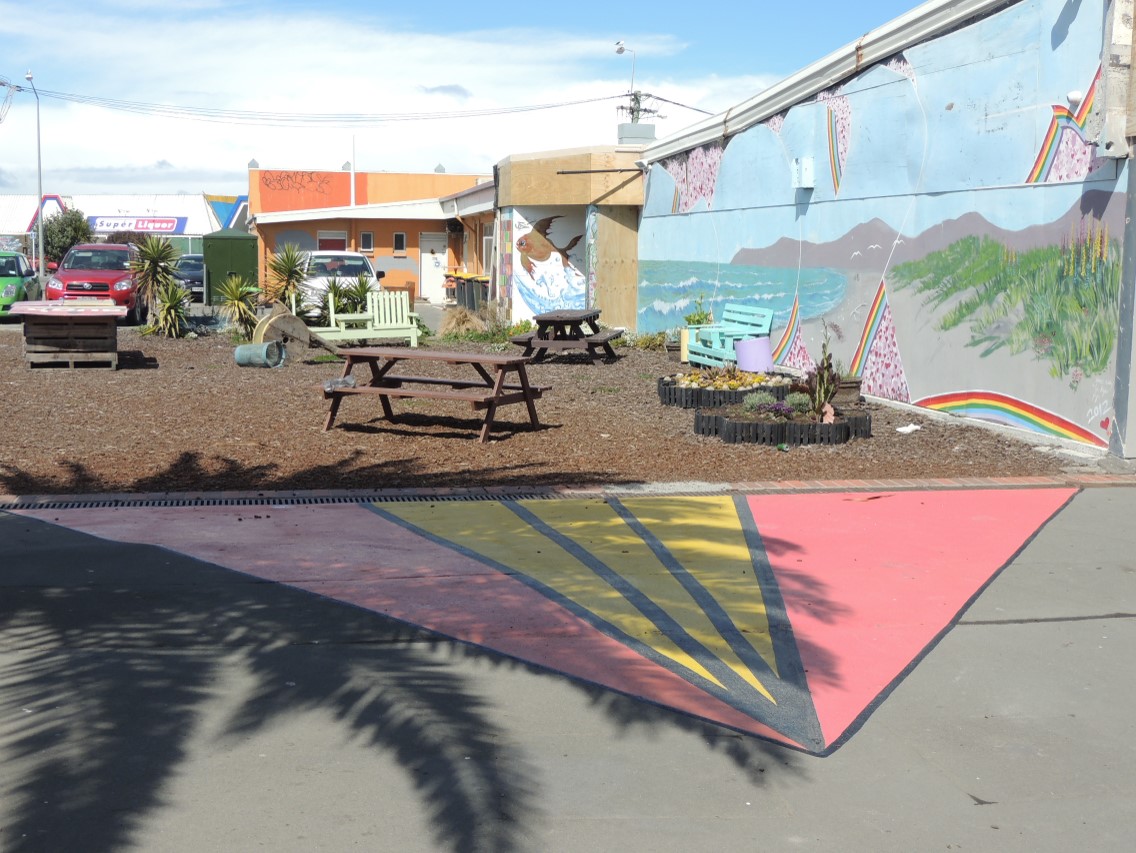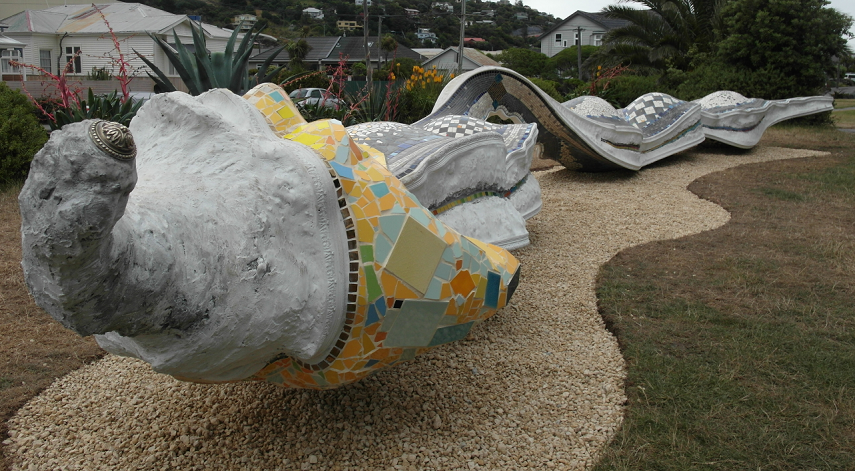While many former landmarks have been lost, temporary streetscape projects and pedestrian and bike-friendly infrastructure can make urban areas more accessible, and improve wayfinding and sense of place.
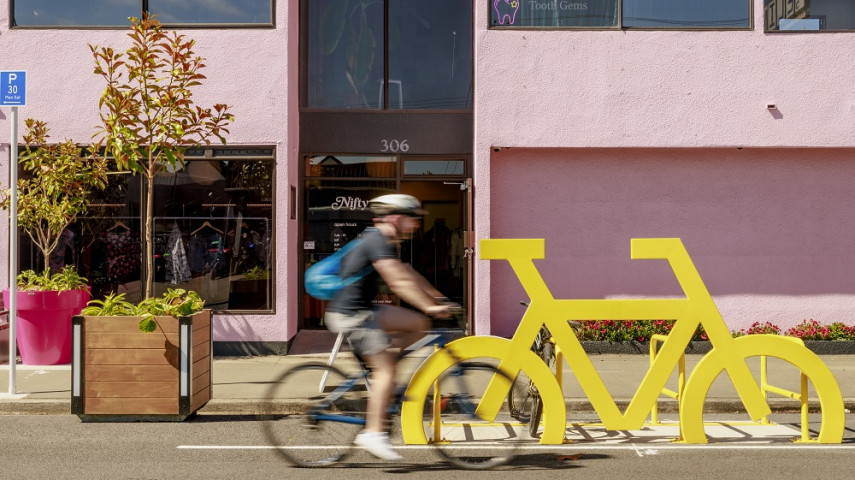
The Enliven Places Programme has trialled and tested a variety of streetscape improvement projects.
Temporary changes to road layouts aim to slow traffic and reimagine how we use public road space in more equitable ways. Our refurbished laneways enable quick and safe journeys through large city blocks.
Pop-up installations act as new guiding features of the city and light the way at night.
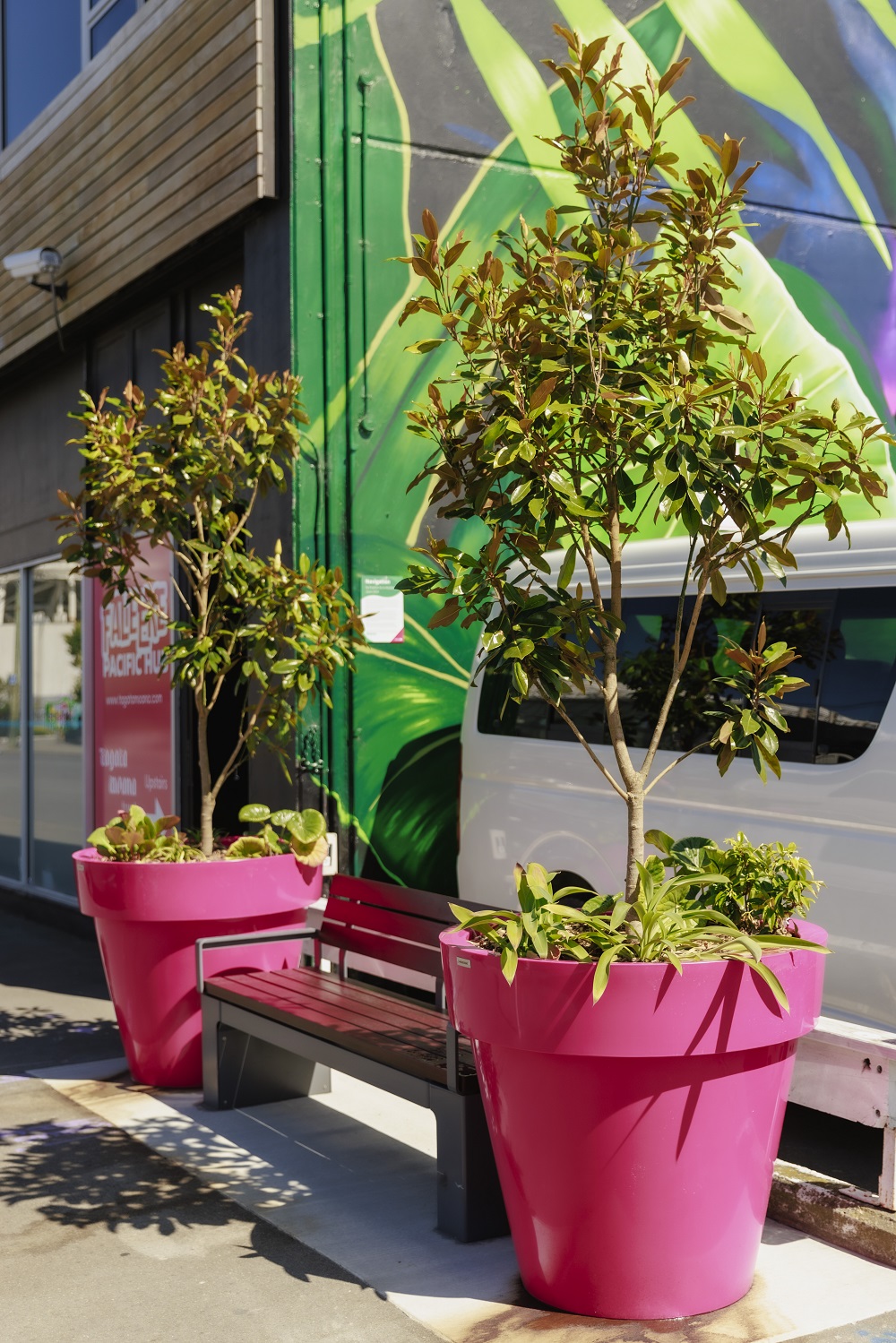
In 2024, temporary streetscape improvements and a mural were delivered at the Cashel Street and Clarkson Avenue intersection.
Seating, planters, trees, cycle stands, and colour were added in response to community feedback.
The mural(external link) is located at Elim Church at 285 Cashel Street.
This project enhances the limited public amenities in this evolving mixed-use area and helps to create a vibrant, green and thriving South-East Central(external link).
Read more about the mural and improvements on Newsline(external link).

In 2023, Southwark Street was enhanced with six new trees, landscaping, and artwork.
These improvements support the Council's South-East Central Neighbourhood Plan, and aim to boost the street's appeal, benefiting the diverse businesses and new residential developments in the area.
The added artwork on a nearby power box by Kophie Su’a-Hulsbosch helps make the street more vibrant and inviting.
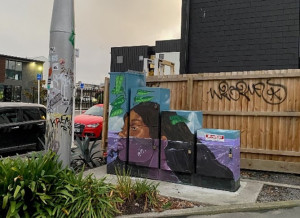
This low-cost project (relative to a full streetscape upgrade) not only increases the tree canopy cover but also makes the street a more pleasant place to live, work, and visit.
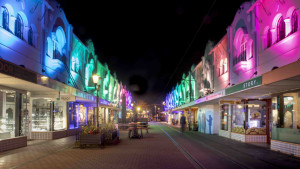 New Regent Street is lit up each night, highlighting its heritage facades and attracting people to this landmark street.
New Regent Street is lit up each night, highlighting its heritage facades and attracting people to this landmark street.
A successful trial led to the Programme making this colourful outdoor installation permanent, lighting the unique building features of New Regent Street's treasured heritage buildings from June 2021.
The display creates a safer, more attractive space to visit and explore the street, and the wider Performing Arts Precinct at night.
Property owners and the local business community were key project partners.

Solar light art columns aid pedestrian safety and wayfinding around Cathedral Square, and during the day their bright colours add to vibrancy.
Renowned artist and carver Fayne Robinson designed two columns which are now located on the temporary, urban park at 9 Cathedral Square. His designs represent day and night and the flora and fauna that once inhabited the city.
Local artist Tahu Robinson designed two additional columns which are located at the southern end of Press Lane, and on the Ko Tāne Waka site on Colombo Street near the Avon Ōtākaro river.
His designs reference important Māori landscapes and cultural practices. He highlights the connections between new and old, and links from Tuahiwi to the Christ Church Cathedral.
 A post-earthquake pedestrian laneway connects Worcester and Gloucester Streets.
A post-earthquake pedestrian laneway connects Worcester and Gloucester Streets.
Press Lane was established on the east side of Tūranga Central Library to better connect Worcester and Gloucester Streets.
The laneway helps pedestrians navigate this part of the central city, and revitalises the area whilst the surrounding properties are developed.
Landscaping was designed by Lincoln University Student, Johanna Blakely, and installed in partnership with The Green Lab (former Greening the Rubble).
 Ara Fine Arts student Grace Duval painted artworks in the laneway with input from staff at The Press, which has a long history at the site.
Ara Fine Arts student Grace Duval painted artworks in the laneway with input from staff at The Press, which has a long history at the site.
A mural reflects local history including a previous laundry service, surgeon, and Māori use of the area, and the laneway surface is decorated with the Press’ motto "Nihil utile quod non-honestum" which translates to "Nothing is useful that is not honest."
The letters reflect the typeset from The Press’ founding year, 1861.

A strip of land with multiple owners was brokered through Life in Vacant Spaces to re-establish a laneway that was an important connection prior to the earthquakes.
The laneway was resurfaced and demarcated with custom bollards to make the laneway more accessible.
The Distinction Hotel removed graffiti and installed lighting ahead of the creation of an artwork by local artist Brandon Warrell.
The artwork highlights the beauty of Christchurch, featuring harakeke (flax), kowhai flowers and familiar central city landmarks such as the tram, New Regent St and the Chalice sculpture.
 Transitional artwork ‘The Grove of Intention’ was painted by Rosie Mac and Kerry Lee on a bordering wall.
Transitional artwork ‘The Grove of Intention’ was painted by Rosie Mac and Kerry Lee on a bordering wall.
The artwork formed part of a global series of tree artworks that ask questions to encourage inner reflection.
The artwork was decommissioned in 2020 to make way for a new pocket park.
Suburban Centres
The Enliven Places programme has also supported redevelopment and re-imagining of suburban centres, particularly those badly affected by the earthquake sequence.
Several projects have supported implementation of the nine Suburban Centres Master Plans.

